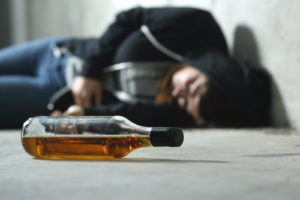The Myth: “It Will Be Safer Them Drink At Home”
According to the Surgeon General, there are 5,000 deaths per year in the U.S. among young people under 21 as a result of alcohol use.
No parent wants their child to have an alcohol problem, be involved in an alcohol-related crash or sexual assault, fall off a balcony during spring break, or suffer from alcohol poisoning.
Yet parents are strikingly ignorant of what the research literature suggests will be effective in keeping our children out of trouble with alcohol.
Many parents feel that young people will be safer if we keep them at home and supervise their drinking, or teach them to drink by having them drink with us. They shore up this conviction with a mental image of drinking patterns in European countries, where they assume that younger drinking ages and drinking with parents decreases youth drinking problems.
In fact, the most recent research suggests that the opposite is true.
Researchers followed 428 families in the Netherlands over a three-year period, and found that young people whose parents permitted drinking at home were more likely to drink more, to drink out of the home, and to develop alcohol problems over time.
This is what the comparison with Europe really shows: countries with higher drinking ages (like the U.S., Sweden, Norway and Iceland) have much lower prevalence of drinking in adolescence (measured in surveys of 15-16 year-olds that are comparable across countries) than countries with lower drinking ages. The U.S. Surgeon General reported that in nearly all the European countries, young people engaged in binge drinking more often than in the U.S.
A recent study of 1,388 young people and their parents in Chicago followed the children found that those who reported receiving alcohol from their parents at home were significantly more likely to have been drunk or to have had five or more drinks at a time in the past two weeks.
Parents need to remember that today’s young people live in a far different world than they did, and protect them accordingly.
Today alcohol is much more accessible to kids because it is now often cheaper than juice, soda or milk. New products are more attractive to youth and more dangerous: “alcopops” are most popular with the youngest drinkers, and alcoholic energy drinks, which pre-mix alcohol with caffeine and other stimulants, create a high-risk population of wide-awake drunks.

